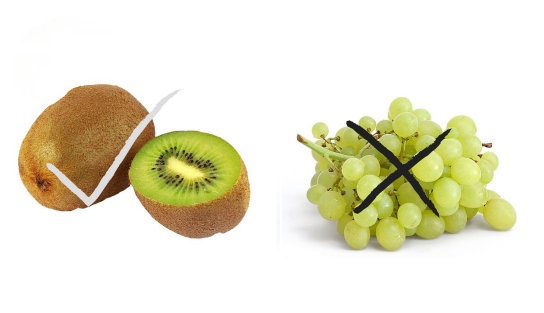Print Edition: July 3, 2013
Summer means many things in the world of health. It means sunnier weather requiring more UVA and UVB protection. It means getting out and getting physical with biking, hiking, kayaking and swimming. And it means fruit and veggie stands seem to explode with mouth-watering produce, beckoning you to eat all your vegetables – just what your mother wanted for all those years.
There’s just one thing flooding our collective consciousness when we go to reach for those non-organic conventional strawberries – just how many pesticides are running through that luscious berry? When do we spend a little more and buy organic and when do we stretch a dollar and settle for the regular stuff?
This is where the Environmental Working Group’s (EWG) lists of best and worst pesticide vegetables comes in to save the day. The dirty dozen includes the 12 worst offending vegetables when it comes to pesticide prevalence. From apples (the absolute worst) to hot peppers (number 12), those fruits and veggies labelled part of the dirty dozen are the ones you should buy organic.
Where there’s a negative list, there’s a positive list and the clean 15 gives produce options where the pesticide use is so minimal, you can save your precious organic money and buy off the rack, if you will. Sweet corn (the least pesticide-ridden) is a summer staple you can eat until ears are growing out your ears.
There are a few notable things when you look at these two lists (and the full 51 item list from apples to sweet corn). A good rule of thumb, with a few exceptions, is that if it has a thick peel you don’t eat, you can probably buy non-organic. Kiwi, cantaloupe and pineapples are among the thick-skinned clean 15 choices. If the peel is edible and the flesh is watery, organic is a better purchase. So peaches, cucumbers and grapes are all big offenders when it comes to pesticide use.
There are some surprises, though. Spinach, a delicious salad base with strawberries, nuts and feta, is a part of the dirty dozen; but cabbage, which seems to be a relative of lettuce, is part of the clean 15 and good to consume.
If you go to the store, though, and you see organic potatoes (part of the dirty dozen) are so astronomically priced you’ll wonder how to make the rent, you can always sub it out for sweet potatoes (part of the clean 15), since sweet potatoes are lower in pesticides, healthier and far tastier than the boring old tater.
There’s no need to feel overwhelmed by the dirty dozen and the clean 15. Sure, conscious shopping can be a pain and sometimes it’s easy to take a cavalier attitude of, “Well, it hasn’t killed me yet,” but when you start to really think about the chemicals you’re consuming and compare it with so many clean, tastier options, the choice is fairly obvious.
Plus, there’s something to be said for quality flavour. Organic, local eating may be foodie buzzwords, but it all tastes so much better. Your taste buds and bowels will thank you when you bite into a rich, pesticide-free strawberry that’s properly red all the way through, instead of those unappealing, white-centred, chemical-filled strawberry knock-offs.
You may become a food snob, but that may not be a bad thing.
More information about EWG’s dirty dozen, clean 15 and other research can be found online at www.ewg.org/foodnews and can also be purchased as an app to alleviate that grocery store panic and make you look like a pro.


